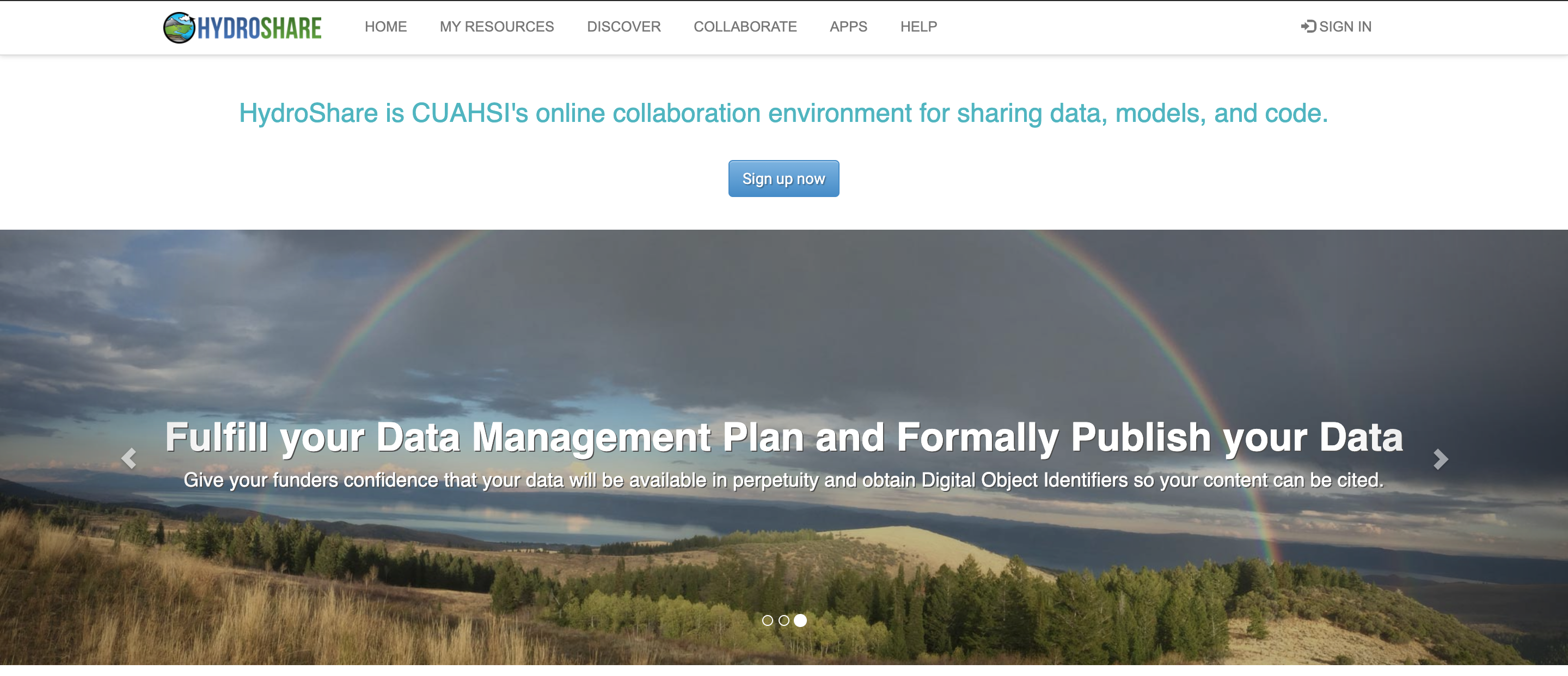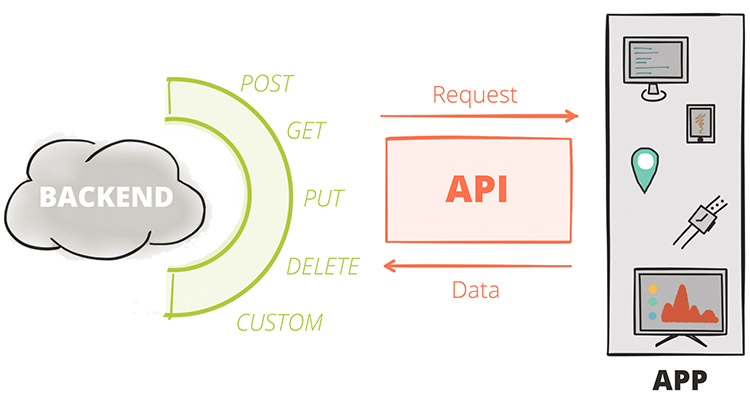Welcome to the Tethys app for HydroShare Python API Demonstration
Introduction to HydroShare
What is HydroShare?
What is HydroShare?
HydroShare is the Consortium of Universities for the Advancement of Hydrologic Science, Inc. (CUAHSI)'s web based hydrologic information system for users to share and publish data and models in a variety of flexible formats, and to make this information available in a citable, shareable and discoverable manner. It enables users to collaborate and work as teams in a web based collaborative environment, thereby enhancing research, education and application of hydrologic knowledge. Hydroshare includes tools (web apps) that can act on content in HydroShare providing users with a gateway to computing and analysis. HydroShare is being developed by a CUAHSI team supported by National Science Foundation awards ACI-1148453, ACI-1148090, EAR-1338606, OAC-1664018, OAC-1664061, OAC-1664119. CUAHSI is an organization representing more than 130 U.S. universities and international water-science-related organizations and is sponsored by the National Science Foundation to provide infrastructure and services to advance the development of hydrologic science and education in the United States.

What is an API?
An application programming interface (API) is a computing interface which defines interactions between multiple software intermediaries. It defines the kinds of calls or requests that can be made, how to make them, the data formats that should be used, the conventions to follow, etc. It can also provide extension mechanisms so that users can extend existing functionality in various ways and to varying degrees. An API can be entirely custom, specific to a component, or it can be designed based on an industry standard to ensure interoperability. Through information hiding, APIs enable modular programming, which allows users to use the interface independently of the implementation.
In building applications, an API (application programming interface) simplifies programming by abstracting the underlying implementation and only exposing objects or actions the developer needs. While a graphical interface for an email client might provide a user with a button that performs all the steps for fetching and highlighting new emails, an API for file input/output might give the developer a function that copies a file from one location to another without requiring that the developer understand the file system operations occurring behind the scenes.
How do APIs work?
Imagine a waiter in a restaurant. You, the customer, are sitting at the table with a menu of choices to order from, and the kitchen is the provider who will fulfill your order. You need a link to communicate your order to the kitchen and then to deliver your food back to your table. It can’t be the chef because she’s cooking in the kitchen. You need something to connect the customer who’s ordering food and the chef who prepares it. That’s where the waiter, or the API, enters the picture. The waiter takes your order, delivers it to the kitchen, telling the kitchen what to do. It then delivers the response, in this case, the food, back to you. Moreover, if the API is designed correctly, hopefully, your order won’t crash!

What is REST ?
Representational state transfer (REST) is a software architectural style that defines a set of constraints to be used for creating Web services. Web services that conform to the REST architectural style, called RESTful Web services, provide interoperability between computer systems on the Internet. RESTful Web services allow the requesting systems to access and manipulate textual representations of Web resources by using a uniform and predefined set of stateless operations. Other kinds of Web services, such as SOAP Web services, expose their own arbitrary sets of operations.
"Web resources" were first defined on the World Wide Web as documents or files identified by their URLs. However, today they have a much more generic and abstract definition that encompasses every thing, entity, or action that can be identified, named, addressed, handled, or performed, in any way whatsoever, on the Web. In a RESTful Web service, requests made to a resource's URI will elicit a response with a payload formatted in HTML, XML, JSON, or some other format. The response can confirm that some alteration has been made to the resource state, and the response can provide hypertext links to other related resources. When HTTP is used, as is most common, the operations (HTTP methods) available are GET, HEAD, POST, PUT, PATCH, DELETE, CONNECT, OPTIONS and TRACE.
HydroShare (hs_restclient) API
The API provided by Hydroshare is python based and very simple to use. The functions in HydroShare can be used very smoothly using their API. To install this restclient in your shell, you can do using pip. The command is ' pip install hs_restclient '
Purpose:
The main purpose behind this Tethys app is to educate a beginner-intermediate level programmer to learn how to build a fully functioning web app that interacts with a database that stores data using a restclient that is completely open source.
You will be able to construct this app from scratch using all the step by step instructions in the 'tutorials' page and the the open source code available at the BYU - Hydroinfomatics Github account.